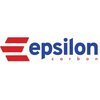Safety Executive
40+ Safety Executive Interview Questions and Answers

Asked in Taural India

Q. How would you control the hazards in the casting industry?
Hazards in casting industry can be controlled through proper training, equipment maintenance, and safety protocols.
Provide regular safety training to employees
Ensure proper maintenance of equipment and machinery
Implement safety protocols such as wearing protective gear and following proper procedures
Regularly inspect the workplace for potential hazards
Provide adequate ventilation and exhaust systems
Monitor employee health and provide medical exams as needed
Encourage reporting...read more

Asked in Taural India

Q. What are the hazards associated with the casting industry?
Hazards in casting industry include exposure to high temperatures, chemicals, and physical hazards.
Exposure to high temperatures can cause burns and heat stress
Chemicals used in casting can cause respiratory problems and skin irritation
Physical hazards include the risk of being struck by heavy objects or machinery
Noise pollution can cause hearing damage
Improper handling of molten metal can cause explosions and fires
Safety Executive Interview Questions and Answers for Freshers

Asked in Coca-Cola Company

Q. What are the key provisions of the factory act in your country?
Key provisions of the Factory Act include regulations on working hours, safety measures, and welfare facilities for workers.
Regulates working hours to ensure employees are not overworked
Imposes safety measures to prevent accidents and injuries in the workplace
Requires provision of welfare facilities such as clean drinking water and sanitation
Sets standards for ventilation, lighting, and temperature in the workplace

Asked in Coca-Cola Company

Q. What is LOTO, and how would you implement it in the factory?
LOTO stands for Lockout/Tagout, a safety procedure used to ensure that dangerous machines are properly shut off and not able to be started up again prior to the completion of maintenance or servicing work.
Implement a written LOTO program outlining procedures for isolating energy sources
Train employees on proper LOTO procedures and provide necessary equipment such as locks and tags
Use lockout devices to physically prevent machines from being turned on during maintenance
Tag out...read more

Asked in Hindustan Unilever

Q. What are the barriers to implementing a safety culture?
Barriers to safety culture implications
Lack of leadership commitment
Resistance to change
Lack of employee engagement
Inadequate resources
Lack of communication and training
Complacency
Blame culture
Inconsistent enforcement of safety policies
Lack of accountability
Organizational complexity
Financial constraints

Asked in Coca-Cola Company

Q. What is your experience in safety audits and inspections?
Experience in safety audit and inspections involves conducting thorough assessments of workplace safety measures to identify hazards and ensure compliance with regulations.
Conducting regular safety audits to assess workplace conditions and practices
Identifying potential hazards and risks in the workplace
Developing recommendations for improving safety measures
Ensuring compliance with safety regulations and standards
Documenting findings and creating reports for management
Traini...read more
Safety Executive Jobs




Asked in Škoda Auto Volkswagen

Q. What is safety, work permit system, Accident investigation
Safety is the practice of preventing accidents and ensuring a safe work environment. Work permit system is a process to control hazardous work activities. Accident investigation is the process of determining the root cause of an incident.
Safety involves implementing measures to prevent accidents and injuries in the workplace.
Work permit system is a formal process to authorize and control hazardous work activities, ensuring proper precautions are taken.
Accident investigation i...read more

Asked in Aarti Industries

Q. Legal requirements for chemicals storage and handling
Legal requirements for chemicals storage and handling
Chemicals must be stored in appropriate containers and labeled correctly
Storage areas must be well-ventilated and equipped with safety measures
Employees must be trained in proper handling and storage procedures
Chemicals should be stored away from incompatible substances
Emergency response plans should be in place in case of spills or accidents
Share interview questions and help millions of jobseekers 🌟


Asked in Coca-Cola Company

Q. How do you promote a safety culture among employees?
Promoting safety culture among employees involves clear communication, training, leading by example, and creating a supportive environment.
Provide regular safety training sessions for all employees
Encourage open communication about safety concerns
Lead by example by following safety protocols yourself
Recognize and reward employees who prioritize safety
Create a supportive environment where employees feel comfortable reporting safety issues

Asked in Epsilon Carbon

Q. What are the responsibilities of a safety officer?
Safety officers are responsible for ensuring the safety of employees, implementing safety protocols, conducting safety inspections, and providing safety training.
Implementing safety protocols to prevent accidents and injuries
Conducting regular safety inspections to identify hazards and risks
Providing safety training to employees on proper procedures and protocols
Investigating accidents and incidents to determine causes and prevent future occurrences

Asked in Iol Chemicals & Pharmaceuticals

Q. Difference between HAZOP and HIRA, AND severity and risk.
HAZOP focuses on identifying potential hazards in a process, while HIRA assesses risks associated with those hazards. Severity refers to the potential impact of a hazard, while risk combines the likelihood and severity of a hazard.
HAZOP (Hazard and Operability Study) is a structured technique used to identify potential hazards in a process plant.
HIRA (Hazard Identification and Risk Assessment) is a process that assesses the risks associated with identified hazards.
Severity re...read more
Asked in NCS Storages

Q. What is the auto-ignition and flash point of diesel?
Auto ignition is the temperature at which a substance will ignite without an external flame. The flash point of diesel is around 52-96°C.
Auto ignition is the temperature at which a substance will ignite spontaneously without an external flame.
The flash point of diesel is typically between 52-96°C.
Diesel has a higher flash point compared to gasoline, which is around -40°C.
Asked in NCS Storages

Q. What is the flash point and ignition point of petrol?
Flash point and ignition point of petrol are important safety parameters. Flash point is the temperature at which petrol gives off enough vapor to ignite, while ignition point is the temperature at which petrol actually ignites.
Flash point of petrol is typically around -43°C (-45°F). This is the temperature at which petrol gives off enough vapor to ignite in the presence of an ignition source.
Ignition point of petrol is typically around 246°C (475°F). This is the temperature ...read more

Asked in Rane Engine Valve Limited

Q. Where were you working in your previous organization?
I worked at XYZ Corporation as a Safety Officer, focusing on compliance and risk management in a manufacturing environment.
Implemented safety protocols that reduced workplace accidents by 30%.
Conducted regular safety audits and training sessions for employees.
Collaborated with management to develop emergency response plans.

Asked in KMV Projects Limited

Q. What are the hazards associated with working at height, and what precautions should be taken?
Work at height hazard refers to the risk of falling from elevated surfaces. Precautions include using fall protection equipment, proper training, and regular safety inspections.
Use appropriate fall protection equipment such as harnesses, guardrails, and safety nets
Ensure workers are properly trained on how to use the equipment and follow safety procedures
Conduct regular safety inspections of the work area to identify and address any potential hazards
Implement a permit-to-work...read more

Asked in Hindustan Unilever

Q. Tell me about the SHE Pillar of TPM.
SHE Pillar of TPM focuses on Safety, Health, and Environment in Total Productive Maintenance.
SHE Pillar stands for Safety, Health, and Environment in Total Productive Maintenance.
It aims to ensure a safe working environment, promote employee health, and protect the environment.
Examples include implementing safety protocols, providing health resources for employees, and reducing environmental impact.
SHE Pillar is essential for overall well-being of employees and sustainability...read more

Asked in Alembic Real Estate

Q. What is Safety , Hazard and Risk
Safety is the condition of being protected from harm or danger. Hazard is a potential source of harm. Risk is the likelihood of harm occurring.
Safety refers to the measures taken to prevent accidents, injuries, or other potential harm.
Hazard is anything that has the potential to cause harm, such as chemicals, electricity, or slippery floors.
Risk is the likelihood of harm occurring from a hazard, taking into account factors like frequency and severity.
Examples: Safety measures...read more


Q. How do you manage emergencies?
Emergency management involves planning, preparation, response, and recovery.
Develop an emergency plan
Train employees on emergency procedures
Conduct regular drills and exercises
Establish communication protocols
Coordinate with emergency services
Assess and address potential hazards
Provide first aid and medical assistance
Implement business continuity measures
Evaluate and improve emergency response
Document and review emergency procedures

Asked in Blue Star

Q. Responsibility of safety officer
The responsibility of a safety officer is to ensure the safety of employees and the workplace.
Develop and implement safety policies and procedures
Conduct safety inspections and audits
Train employees on safety protocols
Investigate accidents and incidents
Maintain safety records and reports

Asked in Adani Wilmar

Q. What is your knowledge of Process Safety Management?
Process Safety Management (PSM) is a systematic approach to managing safety in industrial processes to prevent accidents.
PSM involves identifying and controlling hazards associated with processes involving highly hazardous chemicals.
Key elements include process hazard analysis, operating procedures, and employee training.
For example, a chemical plant may conduct a hazard analysis to identify potential risks of a chemical reaction.
Regular audits and inspections are crucial to ...read more

Asked in Surin Automotive

Q. What is a fire extinguisher?
A fire extinguisher is a portable device used to extinguish small fires by discharging an extinguishing agent.
Types include water, foam, dry powder, CO2, and wet chemical extinguishers.
Water extinguishers are effective for Class A fires (wood, paper).
CO2 extinguishers are suitable for electrical fires (Class C).
Dry powder extinguishers can tackle multiple classes of fire.
Wet chemical extinguishers are designed for cooking oil fires (Class K).

Asked in Prathima Infrastructure

Q. How can you improve safety culture?
Improving safety culture involves leadership commitment, employee engagement, clear communication, training, and continuous improvement.
Leadership commitment to safety is crucial for setting the tone and expectations.
Encouraging employee engagement and participation in safety initiatives fosters a culture of accountability.
Clear communication of safety policies, procedures, and expectations ensures understanding and compliance.
Providing regular safety training and education h...read more

Asked in Hindustan Coca Cola Beverages

Q. Control measures of height work safety
Control measures for height work safety include proper training, use of fall protection equipment, regular inspections, and implementing safe work practices.
Provide comprehensive training on working at heights
Use appropriate fall protection equipment such as harnesses, lanyards, and guardrails
Conduct regular inspections of equipment and work areas
Implement safe work practices like proper planning, supervision, and communication
Ensure workers are aware of emergency procedures ...read more

Asked in Checkmate Industrial Guards

Q. What are the different types of fire?
A type of fire is classified based on the materials involved in the combustion process.
Class A fires involve ordinary combustibles such as wood, paper, and cloth.
Class B fires involve flammable liquids like gasoline and oil.
Class C fires involve energized electrical equipment.
Class D fires involve combustible metals like magnesium and titanium.
Class K fires involve cooking oils and fats.

Asked in Ambuja Cements

Q. What is work at height?
Work at height involves any activity where a person could fall from a height, posing risks of injury or fatality.
Defined as work conducted at a height of 2 meters or more above ground level.
Examples include construction work on scaffolding, roof repairs, and window cleaning.
Requires safety measures like harnesses, guardrails, and proper training.
Falls from height are a leading cause of workplace injuries and fatalities.

Asked in HPCL-Mittal Energy Limited

Q. What is a confined space?
Confined space is an area that is not designed for continuous occupancy, has limited entry and exit points, and may have poor ventilation.
Confined spaces are typically small and enclosed, making it difficult to enter and exit.
These spaces may have limited oxygen supply, toxic gases, or other hazards that can be dangerous to workers.
Examples of confined spaces include storage tanks, sewers, tunnels, and crawl spaces.

Asked in Alembic Real Estate

Q. Work at height, lifting process
Work at height and lifting processes are critical aspects of workplace safety that require proper planning and training.
Ensure all workers are trained on proper lifting techniques to prevent injuries.
Use appropriate equipment such as harnesses, ladders, and scaffolding for work at height.
Regularly inspect equipment for any signs of wear and tear to prevent accidents.
Implement a permit-to-work system for work at height to ensure proper planning and supervision.
Provide adequate...read more
Asked in Inbrew Beverages

Q. How many types of fire are there?
There are five main types of fire, classified based on the materials that fuel them.
Class A: Fires involving ordinary combustibles like wood, paper, and cloth.
Class B: Fires fueled by flammable liquids such as gasoline, oil, and grease.
Class C: Electrical fires caused by energized electrical equipment.
Class D: Fires involving combustible metals like magnesium and sodium.
Class K: Fires in cooking oils and fats, common in commercial kitchens.

Asked in Saudi Aramco

Q. What is a safety policy?
Safety policy is a set of rules and guidelines implemented by an organization to ensure the safety and well-being of its employees.
Safety policy outlines the organization's commitment to safety and health in the workplace.
It includes procedures for identifying and addressing potential hazards.
Safety policy also defines roles and responsibilities for employees in maintaining a safe work environment.
Regular training and communication are essential components of a successful saf...read more

Asked in KMV Projects Limited

Q. Why is safety important?
Safety is important to prevent accidents, injuries, and illnesses in the workplace.
Ensures the well-being of employees
Reduces the risk of accidents and injuries
Increases productivity and morale
Compliance with regulations and laws
Protects company reputation and avoids financial losses
Interview Questions of Similar Designations
Interview Experiences of Popular Companies






Calculate your in-hand salary
Confused about how your in-hand salary is calculated? Enter your annual salary (CTC) and get your in-hand salary


Reviews
Interviews
Salaries
Users










